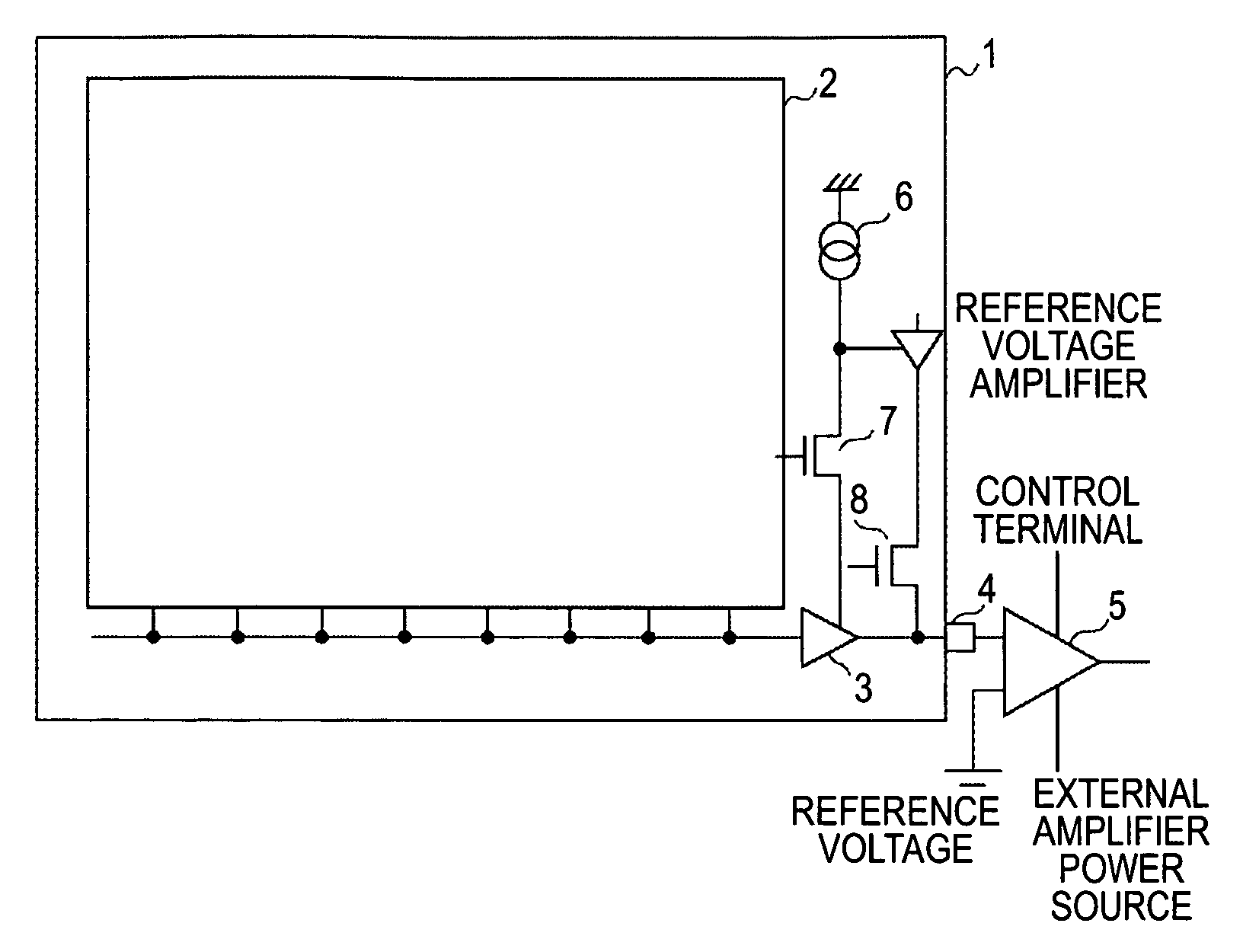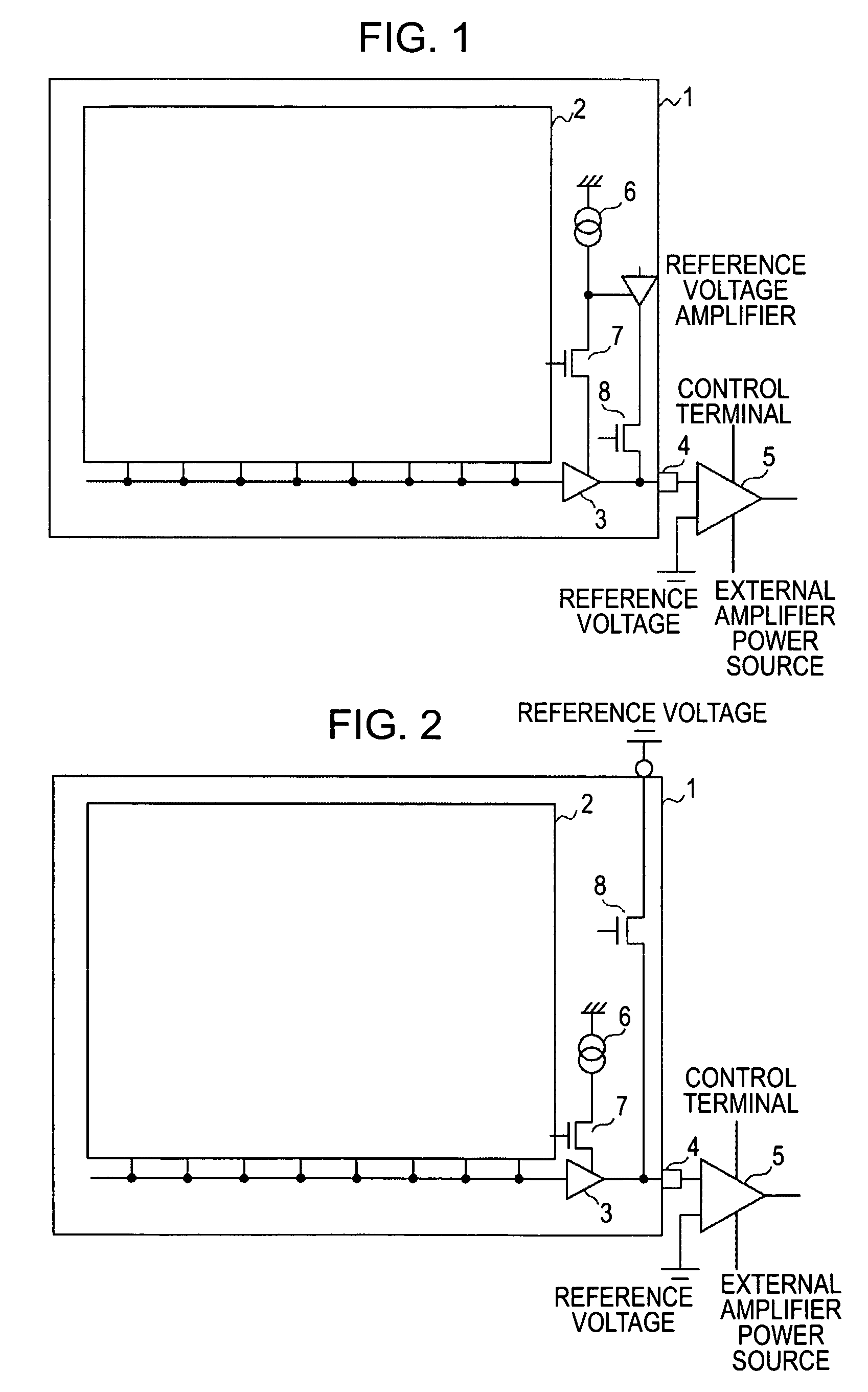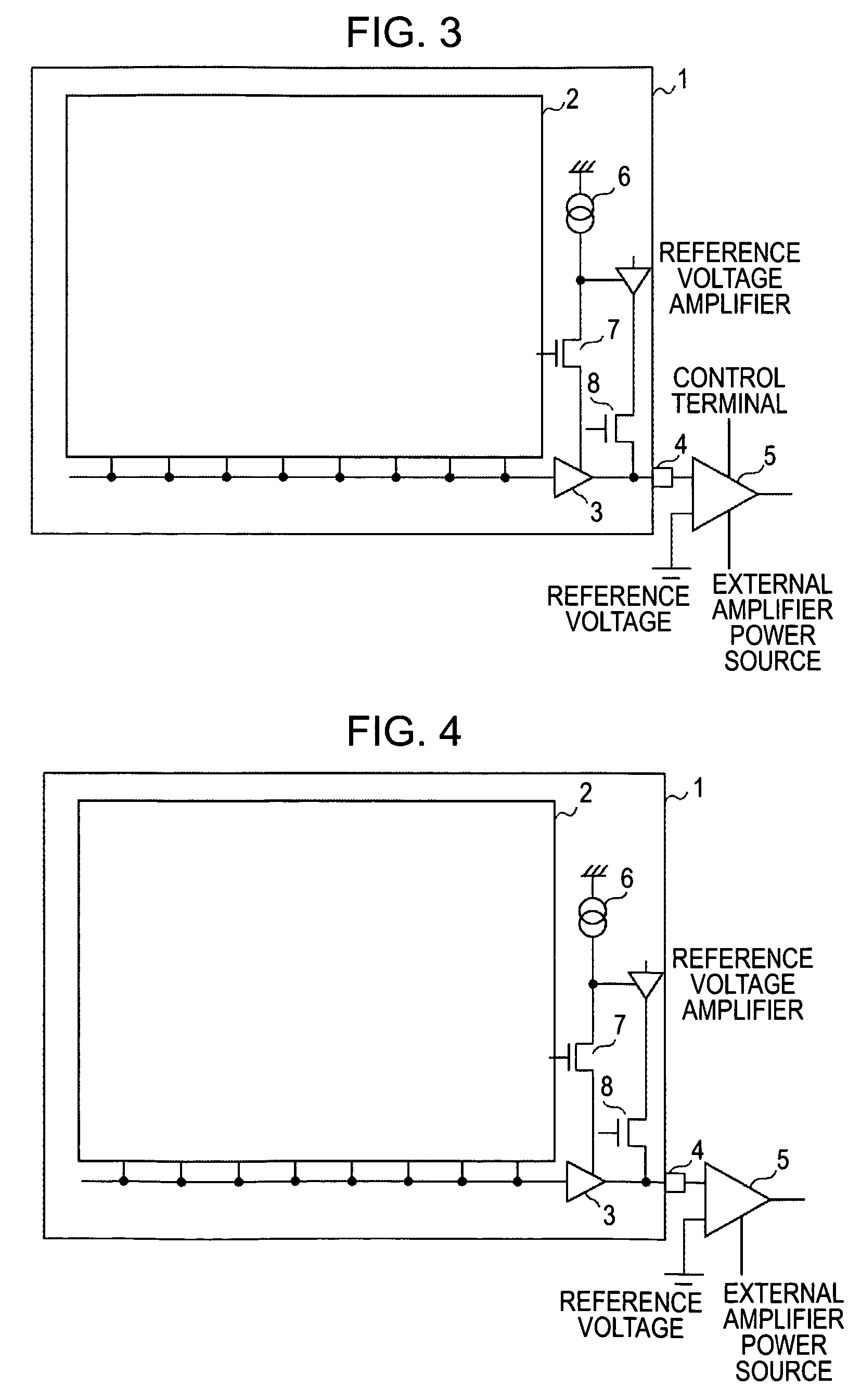Solid-state image device and camera including solid-state image device for selective outputs
a solid-state image and image device technology, applied in the direction of television systems, instruments, color signal processing circuits, etc., can solve the problems of more severe problems than maintaining known battery longevity, new technological problems, and inability to achieve the effect of reducing dark current non-uniformity and excellent quality
- Summary
- Abstract
- Description
- Claims
- Application Information
AI Technical Summary
Benefits of technology
Problems solved by technology
Method used
Image
Examples
first embodiment
[0040]FIG. 1 is a schematic diagram schematically showing a solid-state image device according to a first embodiment of the present invention.
[0041]Reference numeral 1 denotes the entire solid-state image device. Pixels each including a photoelectric converter are arranged two-dimensionally in a pixel area 2. An output amplifier 3 outputs signals of the pixels. An external amplifier (provided with a control terminal) 5 is disposed near an output terminal 4. Reference numeral 6 denotes a current source of the output amplifier 3. A power-save switch 7 reduces the current consumption of the output amplifier 3. Reference numeral 8 denotes an output selection switch. These units are arranged as shown in FIG. 1.
[0042]A structure in which the external amplifier 5 is added to the solid-state image device 1 can also be referred to as a solid-state image device in terms of functionality. This is also applied to the embodiments described below.
[0043]In the first embodiment, during an accumulat...
second embodiment
[0048]FIG. 2 is a schematic diagram schematically showing a solid-state image device according to a second embodiment of the present invention.
[0049]Reference numeral 1 denotes the entire solid-state image device. Pixels each including a photoelectric converter are arranged two-dimensionally in a pixel area 2. An output amplifier 3 outputs signals of the pixels. An external amplifier (provided with a control terminal) 5 is disposed near an output terminal 4. Reference numeral 6 denotes a current source of the output amplifier 3. A power-save switch 7 reduces the current consumption of the output amplifier 3. Reference numeral 8 denotes an output selection switch.
[0050]In the second embodiment, during an accumulation time, the current consumption of the output amplifier 3 is reduced using the power-save switch 7, and an increase in the dark current of a photoelectric converter located near the output amplifier 3 is thus suppressed. In addition, in order to reduce the current consumpt...
third embodiment
[0055]FIG. 3 is a schematic diagram schematically showing a solid-state image device according to a third embodiment of the present invention.
[0056]Reference numeral 1 denotes the entire solid-state image device. Pixels each including a photoelectric converter are arranged two-dimensionally in a pixel area 2. An output amplifier 3 outputs signals of the pixels. An external amplifier (provided with a control terminal) 5 is disposed near an output terminal 4. Reference numeral 6 denotes a current source of the output amplifier 3. A power-save switch 7 reduces the current consumption of the output amplifier 3. Reference numeral 8 denotes an output selection switch. These units are arranged as shown in FIG. 3.
[0057]In the third embodiment, during an accumulation time, the current consumption of the output amplifier 3 is reduced using the power-save switch 7, and an increase in the dark current of a photoelectric converter located near the output amplifier 3 is thus suppressed. In additi...
PUM
 Login to View More
Login to View More Abstract
Description
Claims
Application Information
 Login to View More
Login to View More - R&D
- Intellectual Property
- Life Sciences
- Materials
- Tech Scout
- Unparalleled Data Quality
- Higher Quality Content
- 60% Fewer Hallucinations
Browse by: Latest US Patents, China's latest patents, Technical Efficacy Thesaurus, Application Domain, Technology Topic, Popular Technical Reports.
© 2025 PatSnap. All rights reserved.Legal|Privacy policy|Modern Slavery Act Transparency Statement|Sitemap|About US| Contact US: help@patsnap.com



